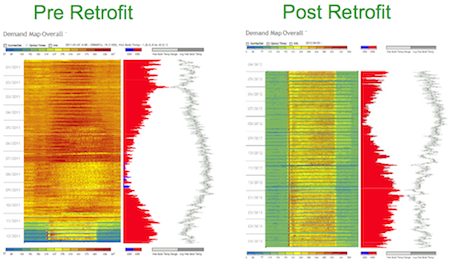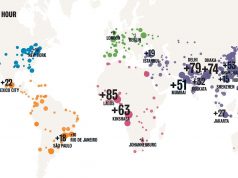What happens to the world’s top cities when they adopt a mutually recognised way to exchange design and management best practices? Just watch and find out. Big changes are coming. Here is why.
Earlier this year MESH Cities participated in a special event at the Global Cities Indicator Facility’s (GCIF) conference in Toronto, Canada. The big news, delivered by Facility director Patricia McCarney, was that their work to establish cities standards made it big when the International Standards Organization embraced it as the basis for ISO 37120. For those readers unfamiliar with how important the ISO’s imprimatur really is, most of the world’s advanced manufacturers comply with one or more ISO standards concerning product quality, environmental performance, and social responsibility—to name a few.
The ISO explains the importance of 37120 this way—it is . . .
A landmark ISO standard outlining key measurements for evaluating a city’s service delivery and quality of life has just been published. Its use will help city managers, politicians, researchers, business leaders, planners, designers and other professionals to focus on key issues, and put in place policies for more livable, tolerant, sustainable, resilient, economically attractive and prosperous cities.
With ISO 37120, policy makers will have the benchmarking tools needed to better understand how their cities perform across a number of key areas including:
- Economy
- Education
- Energy
- Environment
- Finance
- Fire and emergency response
- Governance
- Health
- Recreation
- Safety
- Shelter
- Solid waste
- Telecommunications and innovation
- Transportation
- Urban planning
- Wastewater
- Water and sanitation
Why are shared indicators so important? Policy analysts traditionally rate cities on a number of key metrics similar to the ones listed above. None-the-less, those metrics are derived from top down data mostly related to population growth, economic performance, and subjective quality of life standards. The problem with this data is they lack the transparency required for well informed decision making. Sharing standards-based, bottom-up data among city participants allows policy makers everywhere access to finer grained information.

Energy Savings Graph Courtesy of Schneider Electric
An example of one information benefit we’ve recently discussed is the way private companies use government Big Data to simplify accurate building energy audits. That product offering owes its genesis to data derived from the US Government’s Environmental Protection Agency Energy Star program. In fact, the City of Chicago recently mandated that its largest 3,500 buildings participate in an energy benchmarking program based on the EPA’s standards. They expect a 5% to 7% energy savings worth about $250 million. Remember, that big economic benefit is driven by small energy savings from a fraction of Chicago’s buildings. Imagine the global benefits if cities everywhere used the ISO benchmarks. They will some day.
In a world where more and more people live in cities it would be comforting to think governments understand how to better plan them. When they start that process by embracing ISO 37120, the world will embark on a remarkable journey of positive change. The GCIF’s work is a critical landmark on that path. We congratulate them.







